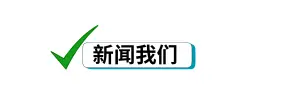In the vast and ever-evolving landscape of digital marketing, understanding how search engines evaluate websites is paramount. At the heart of this evaluation lies the intricate world of backlinks. These digital connections are not just pathways; they are crucial signals of authority and relevance that significantly impact your online visibility. For any website aiming to achieve prominence, mastering the art of link building, encompassing both external and internal strategies, is non-negotiable.
Search engine algorithms continually refine how they interpret these signals. Ultimately, the goal is to present users with the most accurate and valuable information. Backlinks act as votes of confidence. They tell search engines that your content is trustworthy and worth recommending. Without a robust link profile, even the most compelling content can struggle to reach its intended audience. This foundational understanding sets the stage for a deeper dive into specific linking strategies.
The Impact of External Backlinks on Search Engine Ranking
External backlinks are links from other websites that point back to your site. Think of them as endorsements from other entities on the web. These endorsements are incredibly powerful for establishing domain authority and building trust with search engines like Google. Each high-quality external backlink essentially acts as a vote. More votes from reputable sources translate into higher perceived authority for your domain. This directly influences your site’s ability to rank for competitive keywords.
The quality of these links matters far more than the sheer quantity. A single link from a highly authoritative and relevant website carries immense weight. Conversely, numerous links from low-quality, spammy sites can harm your SEO efforts. Search engines analyze various factors to determine a link’s value. These include the referring domain’s authority, its relevance to your content, and the anchor text used. A diverse and natural external backlink profile signals organic growth and genuine value.
Strategies for Acquiring High-Quality External Backlinks
Building a strong external backlink profile requires a strategic and often proactive approach. It’s not about passive waiting; it’s about actively earning those valuable endorsements. One highly effective method is guest posting. By creating high-quality, relevant content for other authoritative websites in your niche, you can secure valuable links back to your site. This also establishes your brand as an industry expert, expanding your reach and credibility.
Another powerful strategy is broken link building. This involves identifying broken links on other websites and suggesting your content as a replacement. This method offers a win-win scenario. The website owner fixes a problem, and you gain a relevant external backlink. Creating genuinely valuable, unique, and shareable content also encourages organic linking. When your content provides exceptional value, others will naturally want to link to it as a resource for their own audiences.
Understanding Internal Backlinks for Site Architecture
While external backlinks bring authority from outside, internal backlinks are all about organizing and strengthening your website from within. These are links that point from one page on your domain to another page on the same domain. Their primary role is to guide users and search engine crawlers through your website’s structure. A well-executed internal linking strategy ensures that no valuable content remains an isolated island.
Internal links are crucial for improving user experience. They help visitors discover related content, keeping them engaged on your site for longer periods. This reduces bounce rates and signals to search engines that your site is valuable and user-friendly. Furthermore, internal links play a significant role in distributing page authority. They pass “link equity” from stronger pages to weaker ones, bolstering the overall SEO performance of your content, leading to better search engine visibility.
Boosting SEO with Strategic Internal Backlink Implementation
Strategic implementation of internal backlinks can dramatically enhance your site’s SEO. One of the most powerful applications is in developing topical relevance and keyword clustering. By linking closely related articles together, you build clusters of content around specific broad topics. This signals to search engines that your website is a comprehensive resource for that particular subject, boosting your topical authority.
Consider a topic cluster around “content marketing.” You might have a main pillar page on content marketing, linked to by several supporting articles covering specific aspects like “blog post optimization” or “video content strategy.” Each supporting article would also link back to the pillar page, and relevant internal backlinks would connect supporting articles to each other. This interlinking not only improves search engine crawlability but also reinforces your authority on the subject.
The Synergy of External and Internal Backlinks for Comprehensive SEO
True SEO success comes from a synergistic approach, recognizing that both external and internal backlinks are indispensable components of a robust strategy. External backlinks bring power and authority to your domain from the outside. They are the initial spark that ignites your website’s credibility in the eyes of search engines. However, without a well-structured internal linking system, that external power may not effectively flow throughout your site.
A strong internal backlink structure ensures that the authority gained from external links is distributed intelligently across your content. It allows your website to fully capitalize on every external vote of confidence. When external links point to a page, and that page, in turn, links to other relevant internal pages, the collective power of your entire site increases. This holistic approach builds both domain authority and topical authority, which are critical for achieving and maintaining high search engine ranking positions. Consistency in building both types of links creates a powerful, self-reinforcing SEO ecosystem.
